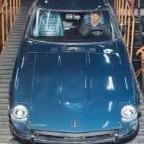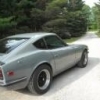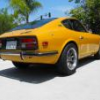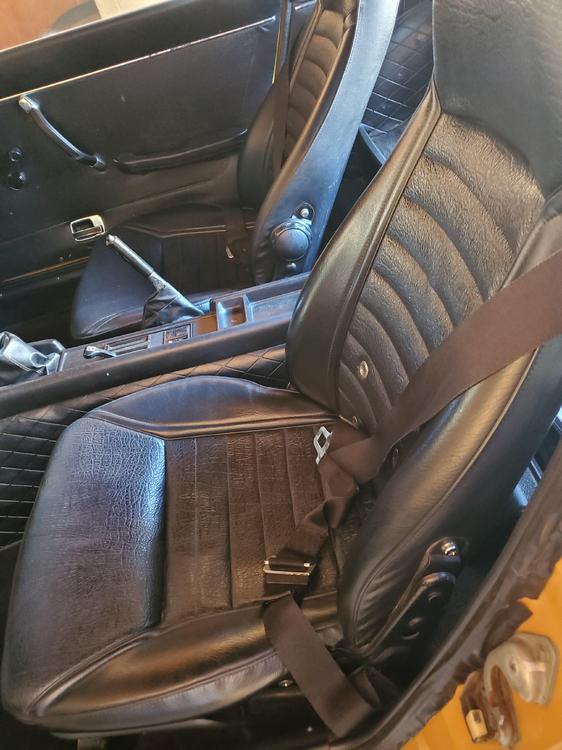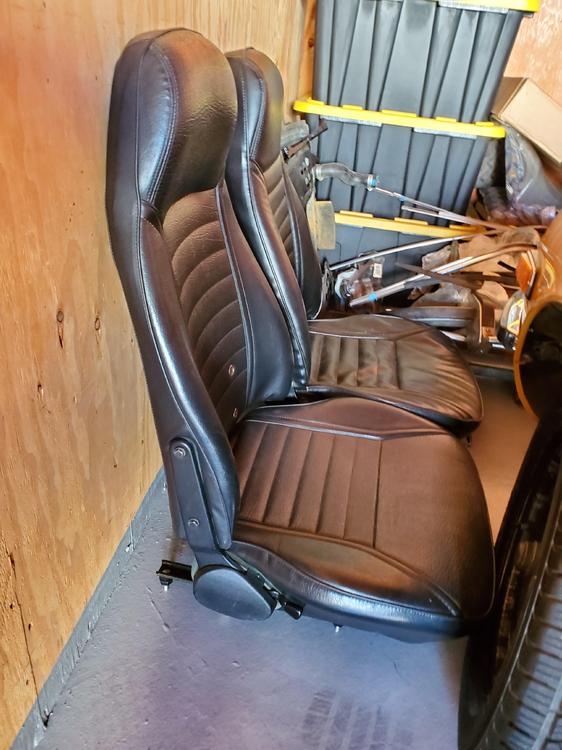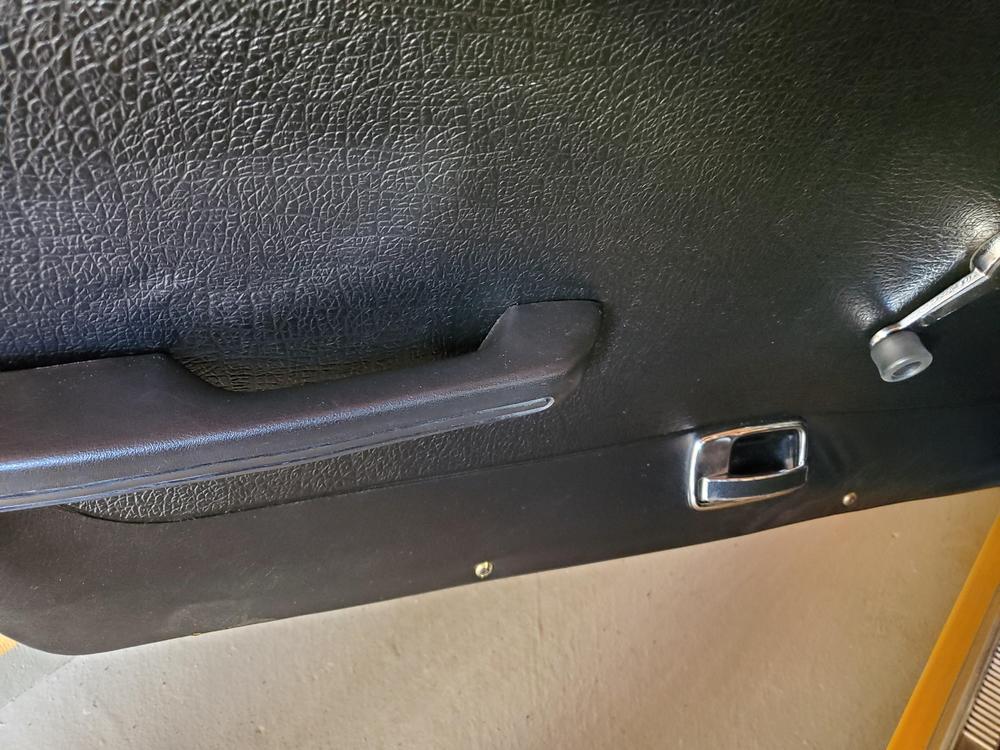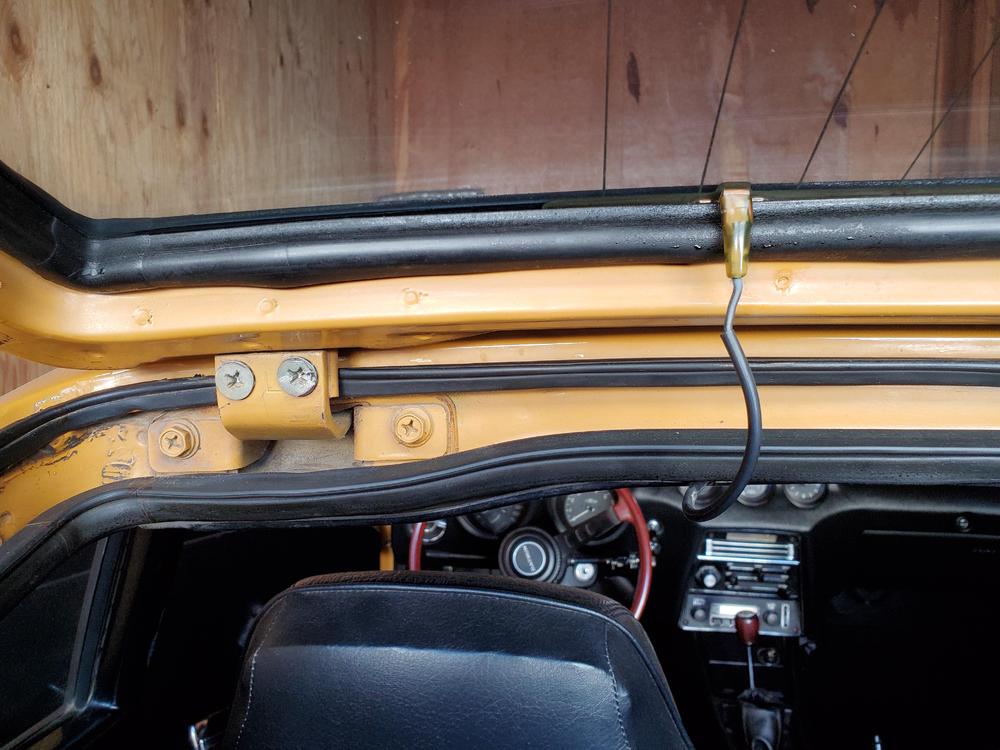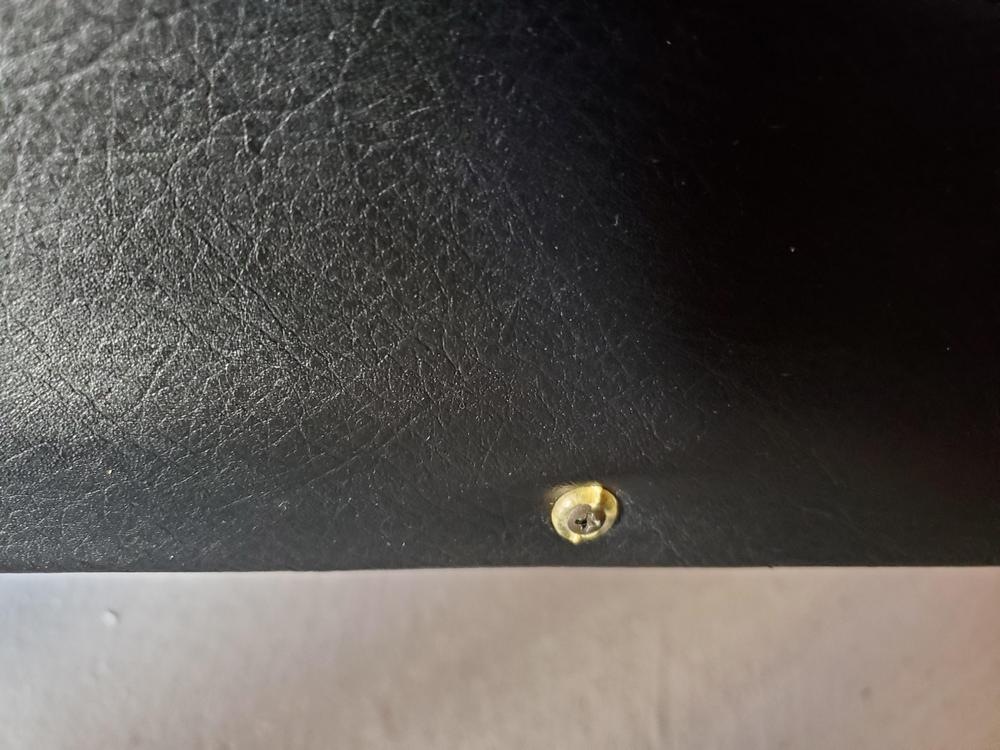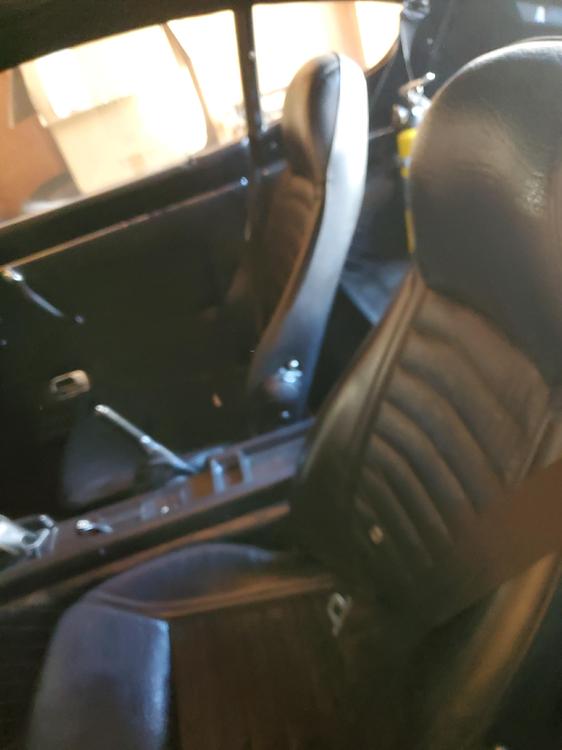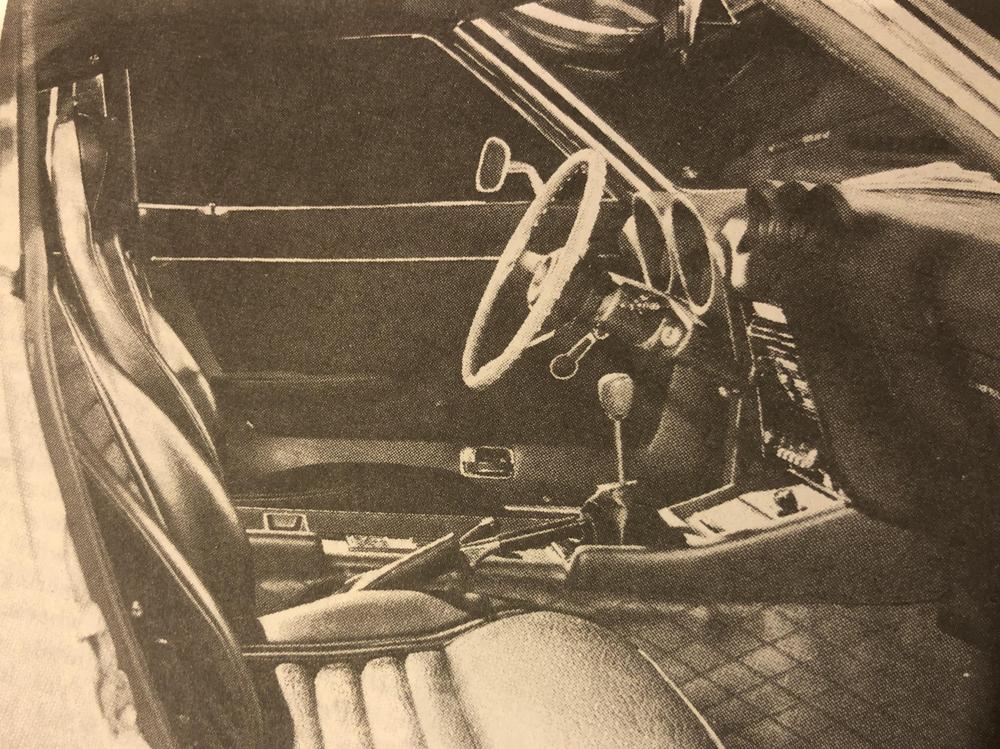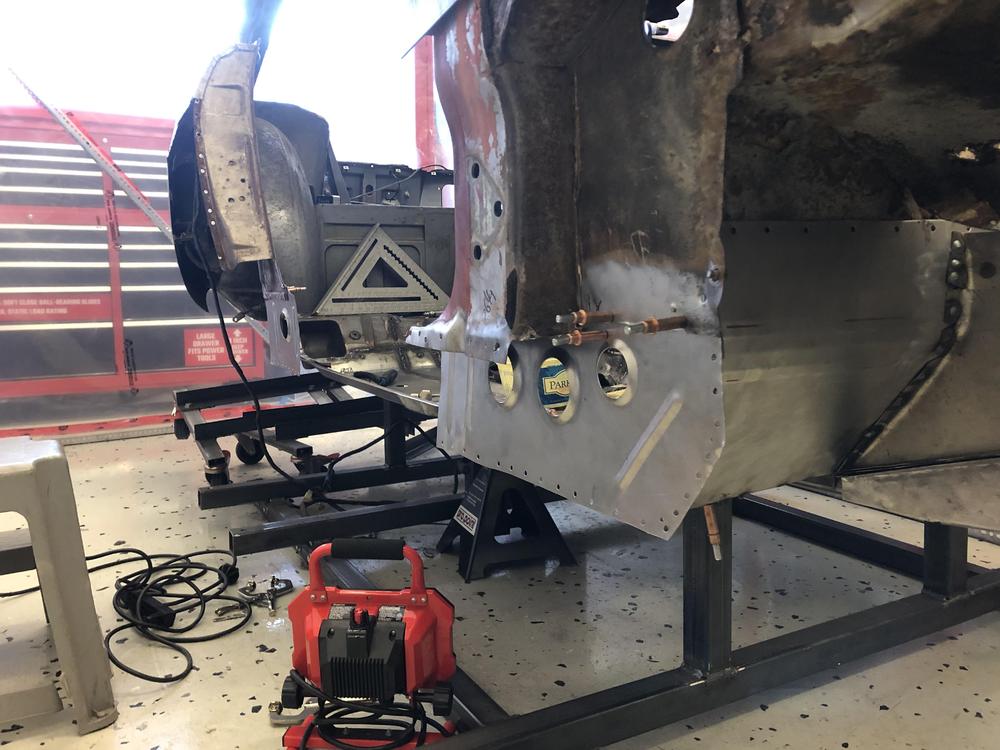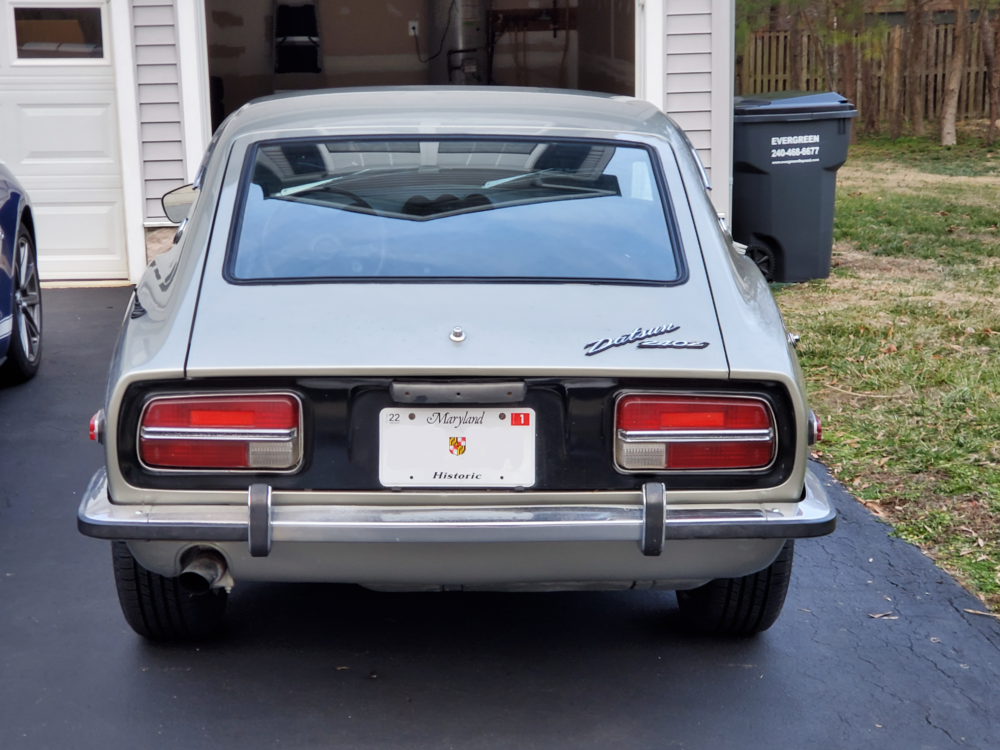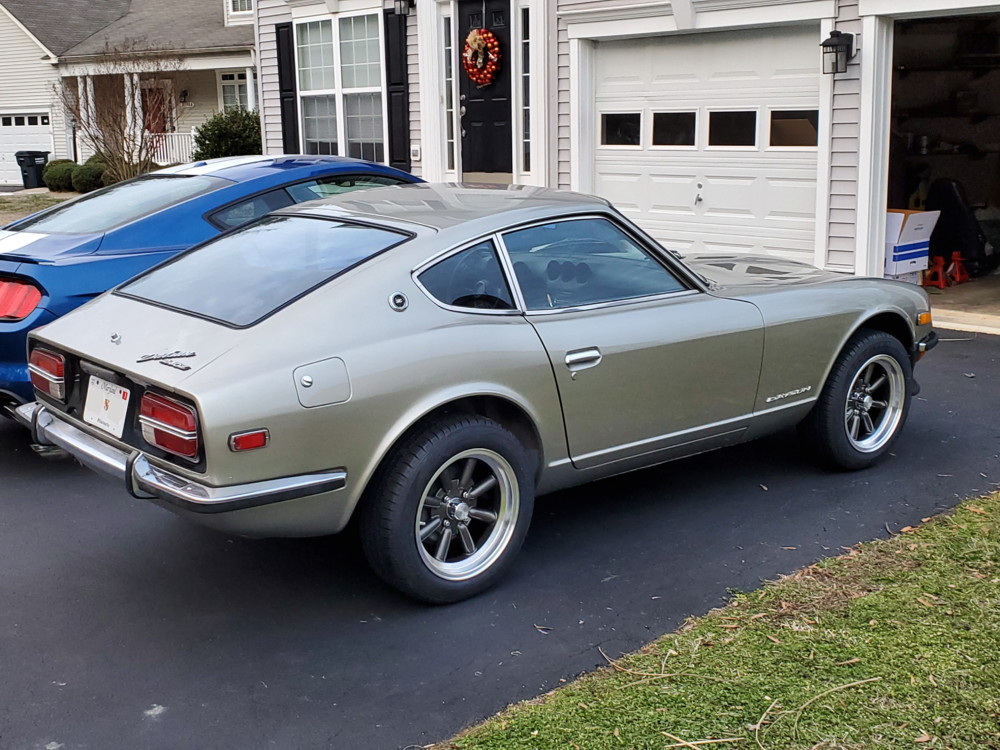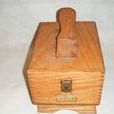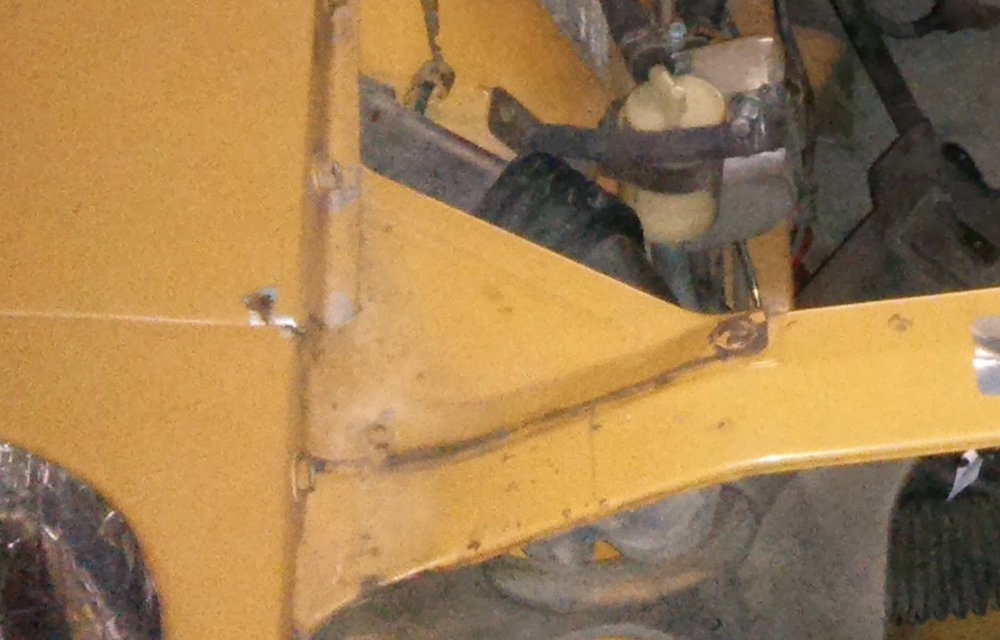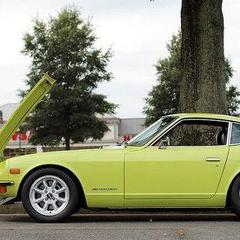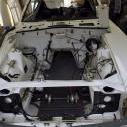I saw a discussion about screws on the lower door trim . I have seen so many cars that have screws in person, countless.Also old magazines shows the screws are not rare thing , here are two pictures from magazines “ R & T April 1970 “ and “ Motor trend March 1971 “ . Looking at them , you can find the screws.
And also one of the pictures shows a seat back which I call #2 slightly slim seat back which could be the one on the left of the green BAT car ( looks like I am the only one who think so though ) . This car in the picture could be a late 1970 model , a shiny chrome coat hanger , a non louvre type map light , and a beautiful long leg stay for the rear view mirror tell us the car is a late 1970 model .
I haven’t seen the screws in very early cars like prototype , nor 1972 or later cars . So few of them in Japanese car . Mostly I saw it in the US 1969- 1970 cars .
I guess like this ,
designers didn’t expect having the screws on the door trim when they finished design work . That is why the screw never been given its part number .
But later on cars began to be exported , the door trim might get bent outward and loosened due to the heat / moisture in the middle of the Pacific Ocean , or the strong sun shine affects cars awaiting the transport track at the port .
So corrective action would have been made by somewhere before departing the port , or the dealership . Nissan shatai factory would be the least scenario where the screws attached, because I don’t think the factory assembly line would use the screw which wasn’t indicated on the parts catalog .
How about this , I guess after somewhere around in 1971 or 1972 , door trim securing clip could be upgraded ( positioning or number of use ) , or environment in the transportation ship would be upgraded, then the screws would became no use .
Kats
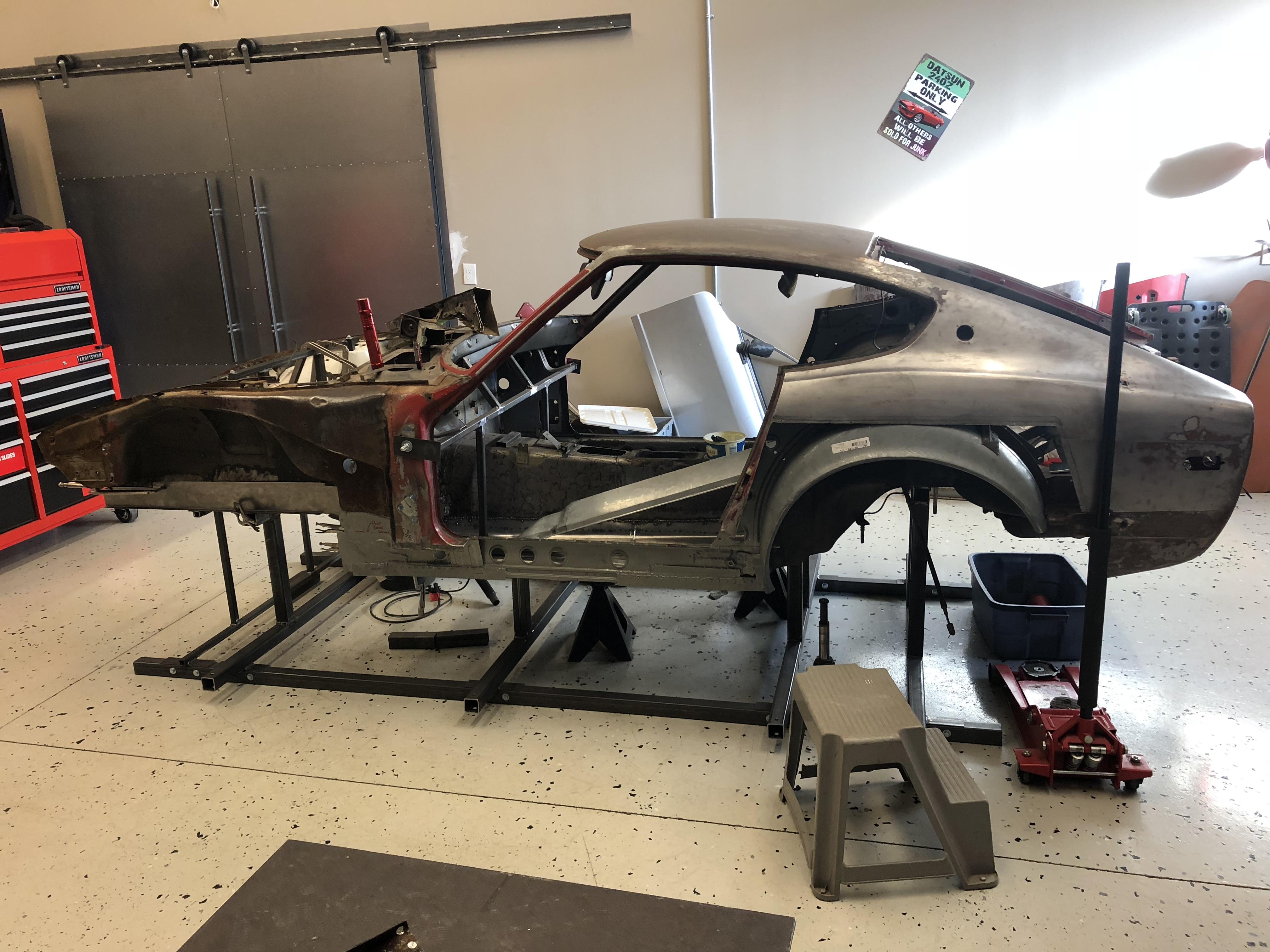
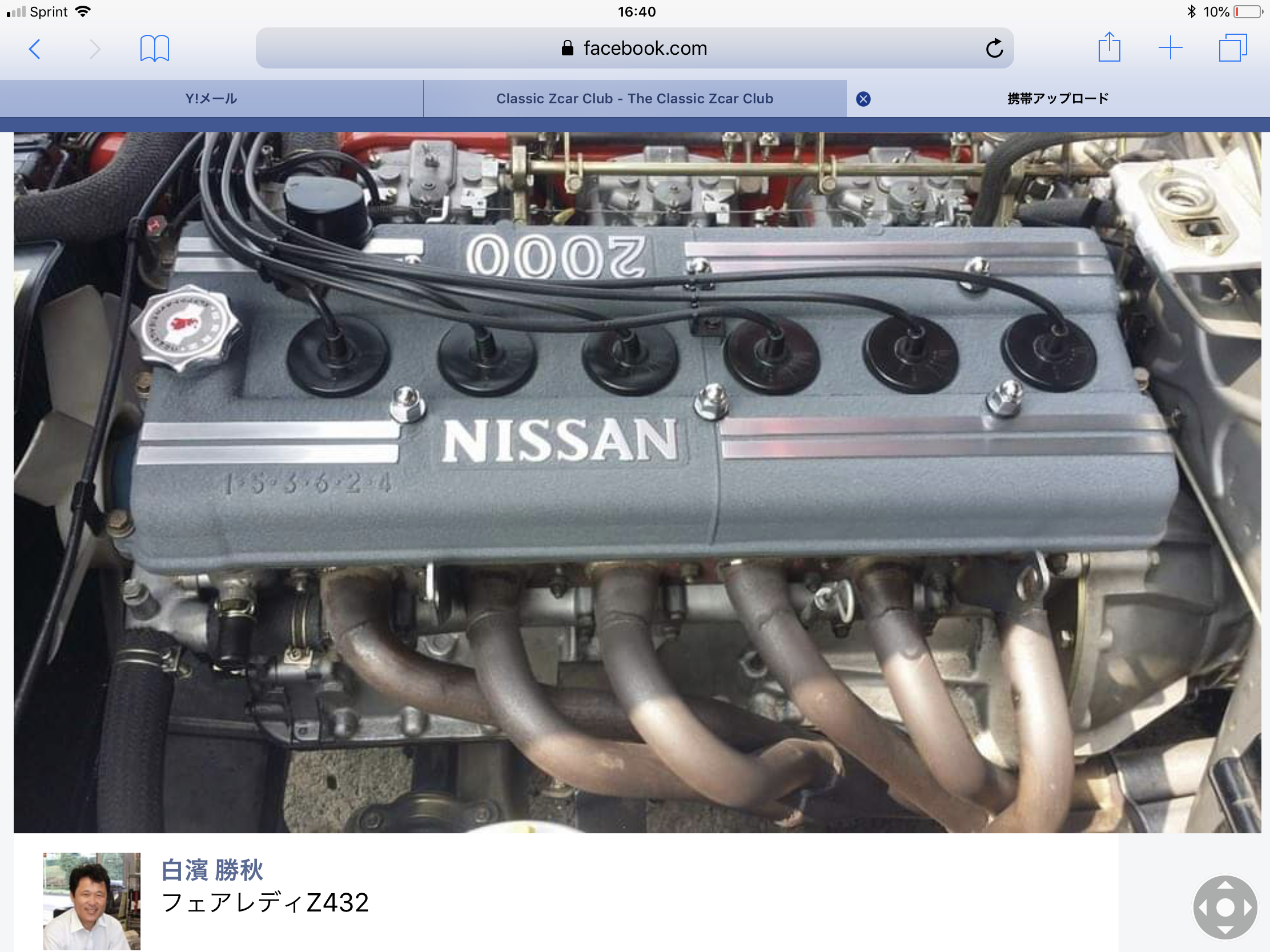
 Subscriber
Subscriber 3Points2,228Posts
3Points2,228Posts



